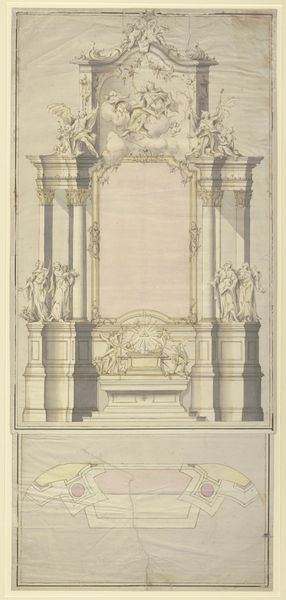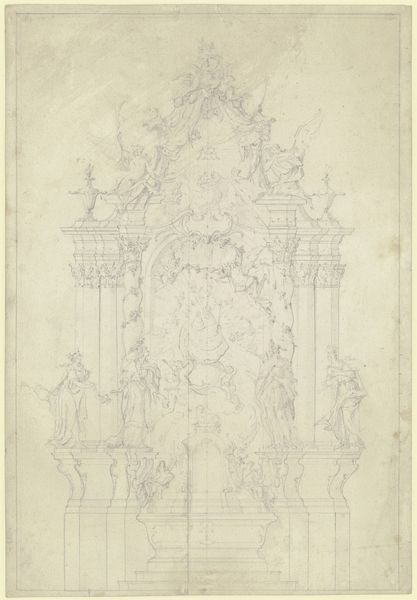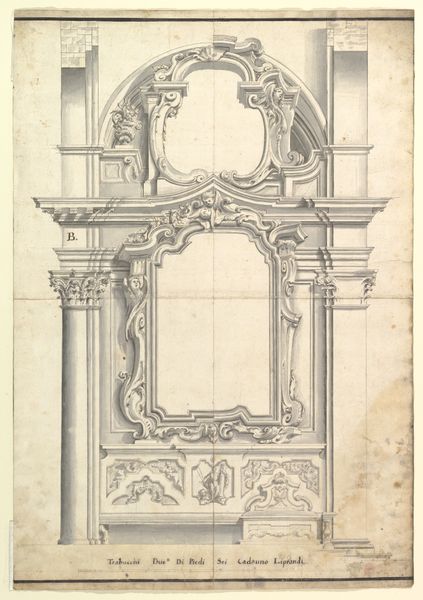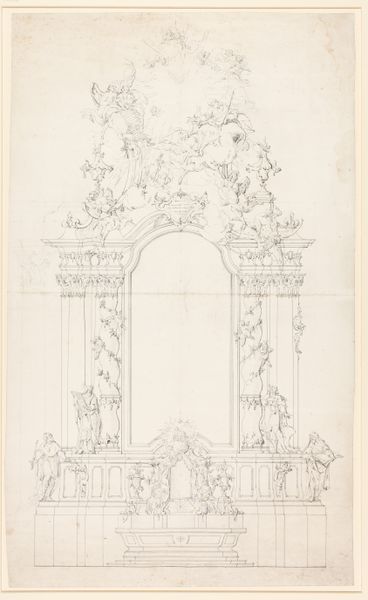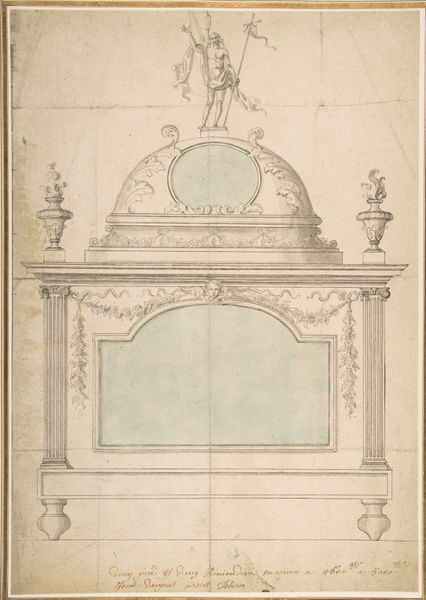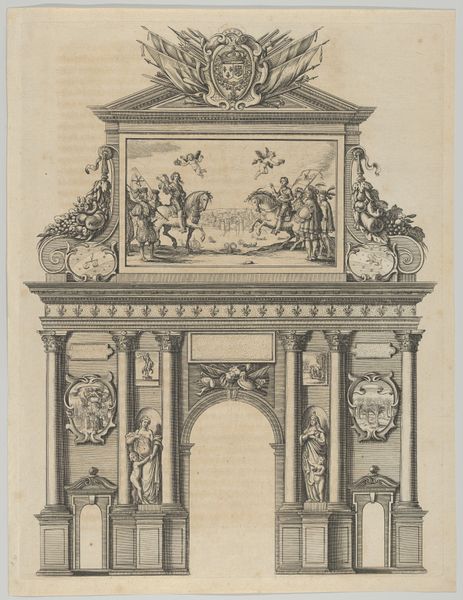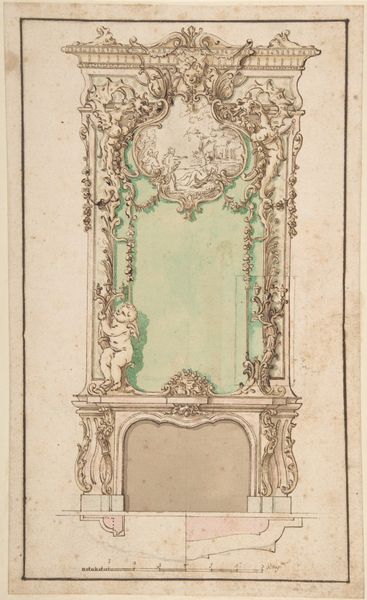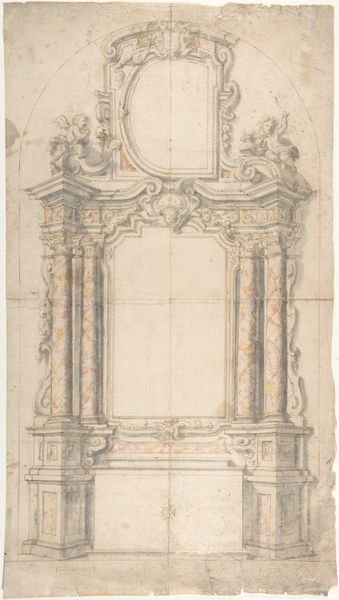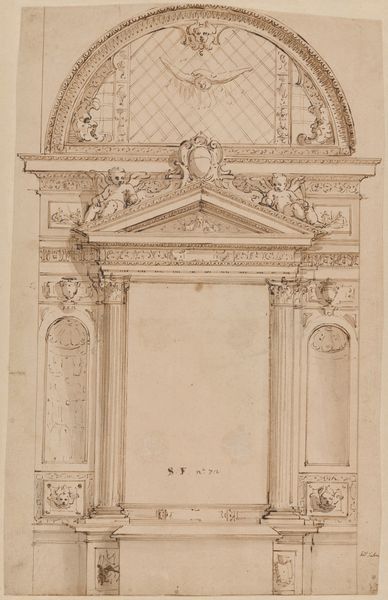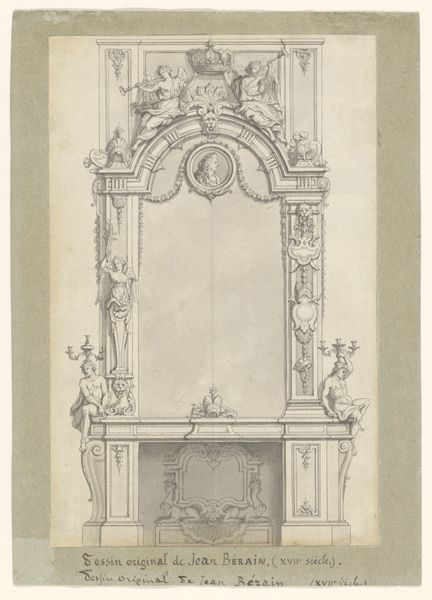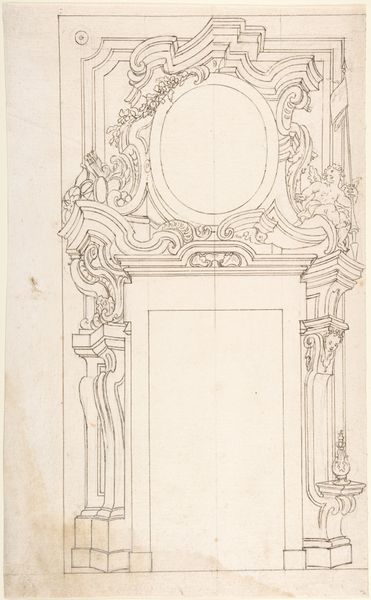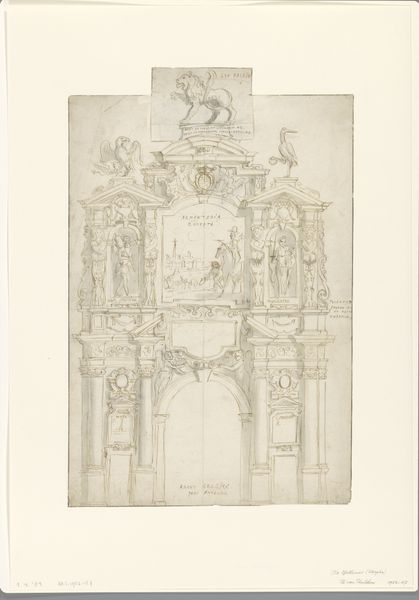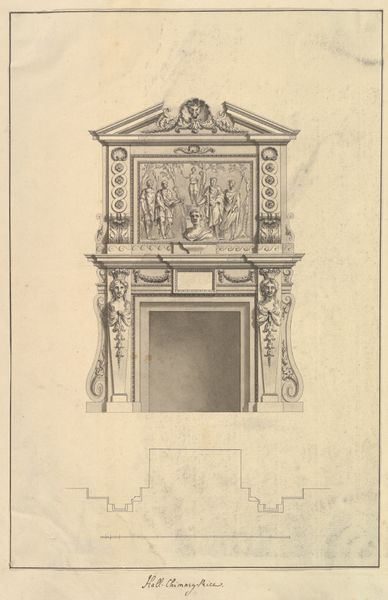
Altarentwurf_ Rechts und links von der Rahmung für das Altarblatt stehen die beiden Johannes, zu Füßen der Säulen rechts und links sitzt je eine allegorische weibliche Gestalt
0:00
0:00
drawing, ink, architecture
#
drawing
#
baroque
#
ink
#
15_18th-century
#
architecture
#
rococo
Copyright: Public Domain
Editor: This drawing, titled "Altarentwurf," or "Altar Design," by Johann Baptist Straub, is rendered in ink. I’m immediately struck by the architectural detail – it’s incredibly ornate, but something about its formality feels imposing. What stands out to you when you look at it? Curator: For me, it’s crucial to examine this design within its historical and societal context. Straub worked during a period where the Church wielded considerable influence, particularly in shaping societal values and suppressing marginalized voices. Knowing this is an altar design—a structure for religious ritual—I find myself reflecting on who this structure was built for, who it excludes, and whose stories are amplified within its walls. Editor: That's a really interesting point, I hadn’t considered the implications of its construction. Does the artistic style, Rococo, also play into that? Curator: Absolutely. The Rococo style, with its emphasis on ornamentation and grandeur, often served as a tool for the powerful. Think about the role of the patron. The act of commissioning such an elaborate altar becomes a display of wealth and piety, a visual statement of power. It implicitly silences other forms of expression or belief systems. It also invites the questions: who benefitted, who was subjugated? How do the allegorical female figures positioned at the base relate to the social position of women during this era? Are they symbols of strength, or objects of decoration? Editor: So, analyzing it through this lens invites questions about power structures embedded within the artwork itself, not just admiring its beauty? Curator: Exactly. It prompts us to critically engage with the social and political dynamics of the time. Art doesn't exist in a vacuum. By bringing historical and contemporary theories to bear, we can reveal how artworks perpetuate or challenge prevailing norms, giving voice to the oppressed by interrogating visual histories. Editor: This has totally reshaped how I understand the drawing! It’s less about the aesthetic appeal, and more about the story it tells about the era. Curator: And whose stories remain untold. It's a constant negotiation, a dialogue between past and present.
Comments
No comments
Be the first to comment and join the conversation on the ultimate creative platform.
